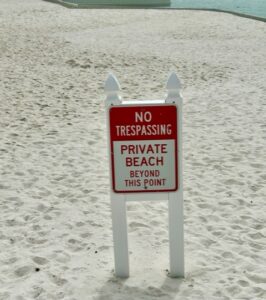The implementation of effective policies, regulations, and infrastructure is essential to create inclusive coastal areas that cater to the needs of both residents and tourists. However, policy tools of exclusion have been used over time in ways that systematically and disproportionately impact people of color. The Sustainable Development Code provides useful ordinances for local governments. In the chapter Reducing Barriers to Coastal Public Beach Access, Sustainable Development Code, Chapter 6.3 Environmental Justice, Elisabeth Schanz (author), Melissa Scanlan, Shelby Green, Miranda Leppla, Stephanie Otts (editors) (2023), they highlight the importance of reducing barriers to coastal public beach access in order to promote sustainable and inclusive cities. The chapter emphasizes the significance of equitable distribution of beach access and the need for policies and regulations that prioritize public rights.
Berkeley Ecology Law Quarterly recently published a law review article by Sarah Martinez. This article is a work product from her time as a Water Policy Specialist at the Center for Water Policy. Her research sheds light on the enduring issue of racial disparities in access to outdoor recreation, particularly “blue spaces” (beaches and pools). The article delves into the historical exclusion and environmental justice challenges faced by Black and People of Color and ties that to barriers that still exist today. The research also discusses potential tools, such as the public trust doctrine and legislative initiatives like the Environmental Justice for All Act, which may aid in achieving equitable access to blue spaces.
Read the research:
Sarah R. Martinez, “Racism in the Water: Access for all in Outdoor Recreation” 50.1 Ecology Law Review Quarterly 1 (2023)
